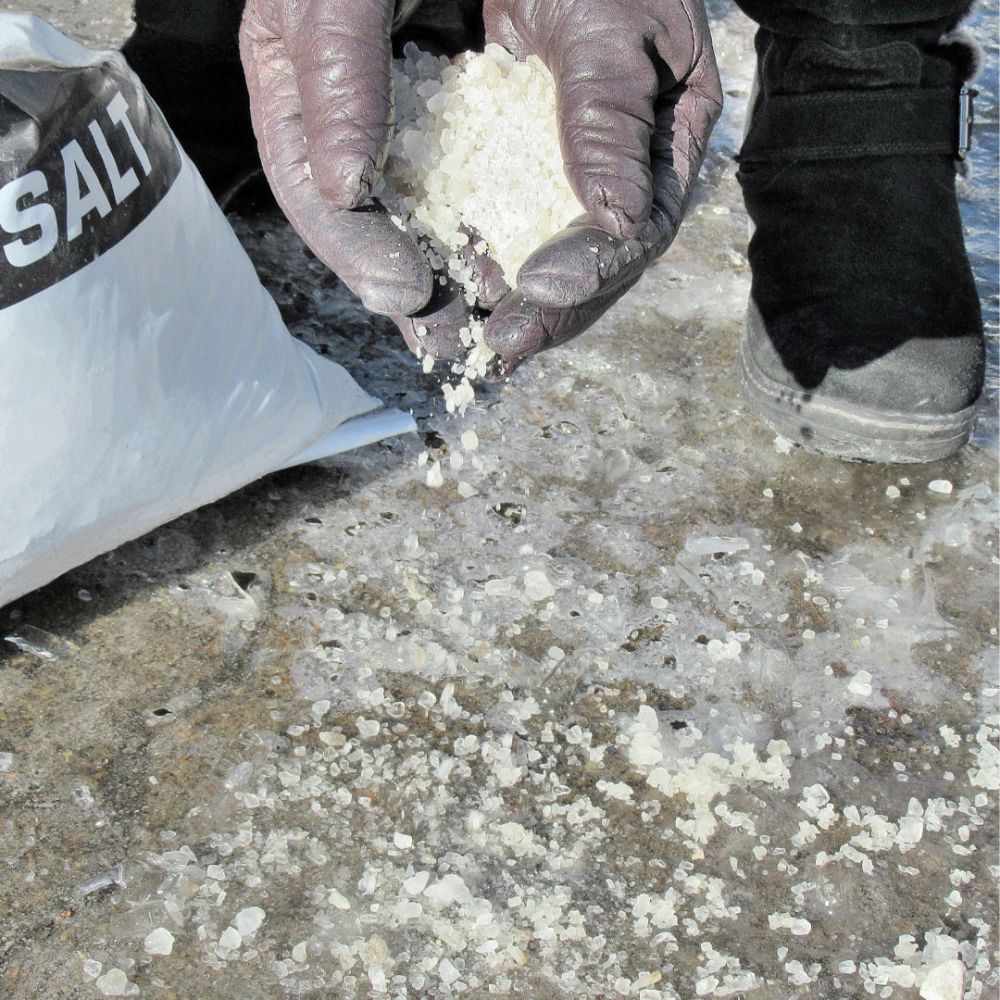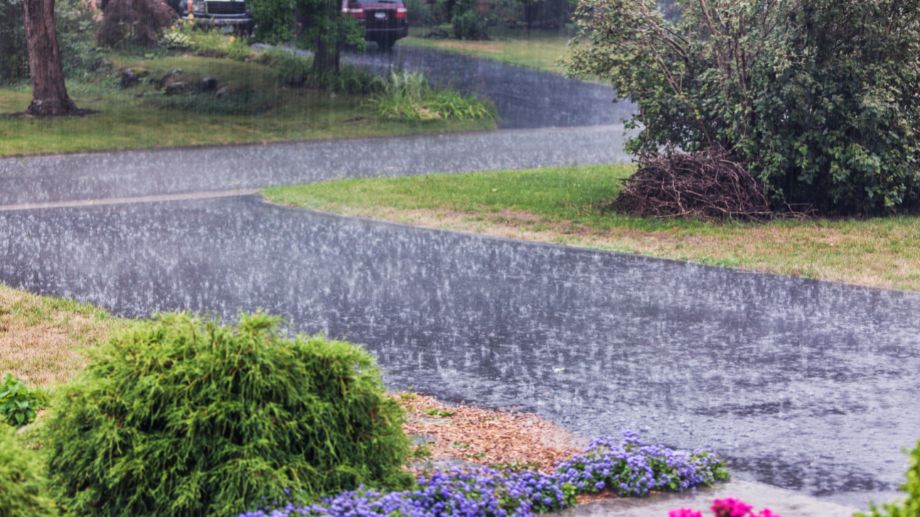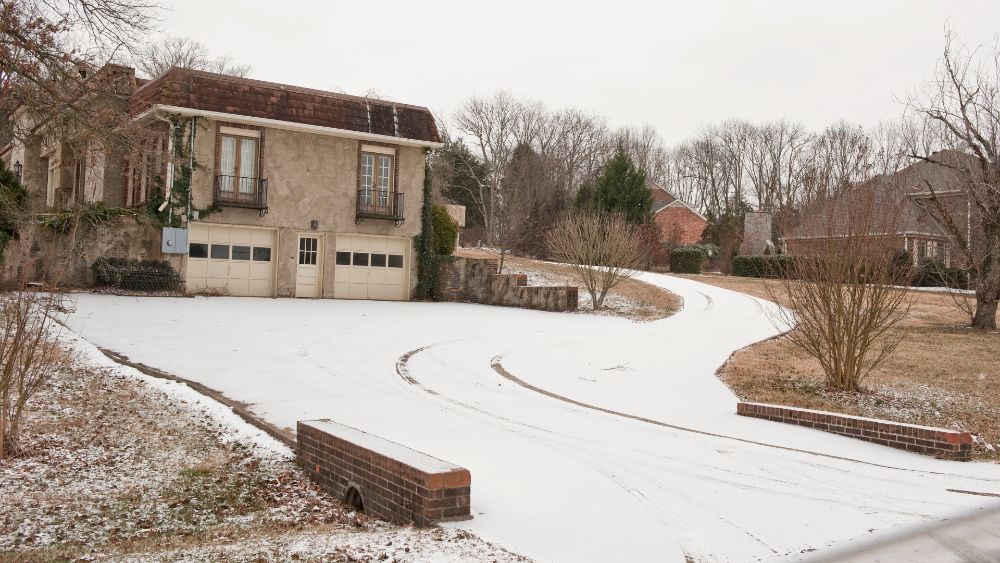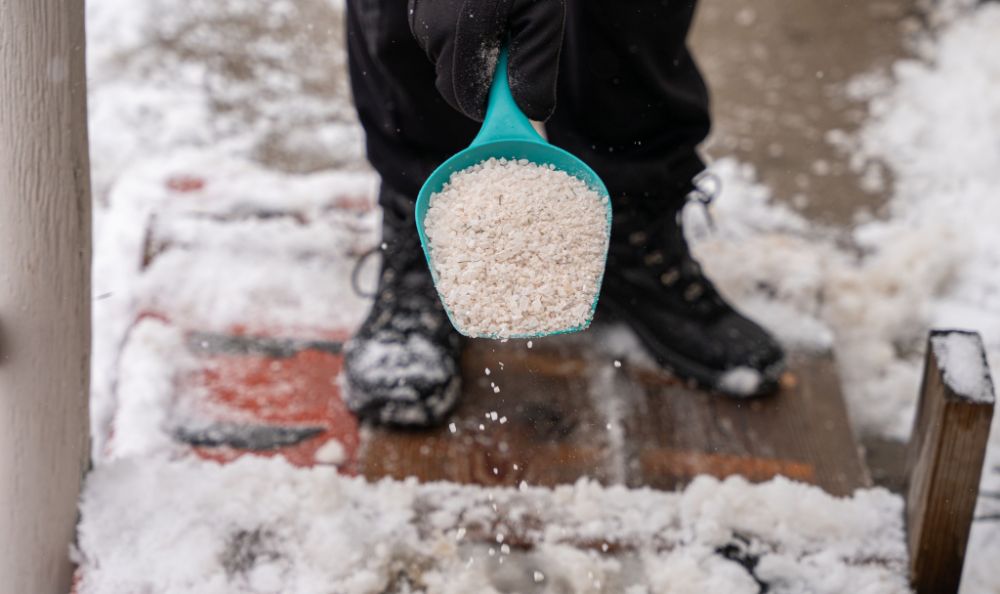During the winter, snow can cause roads, driveways and paths to become frozen and slippery. Ice melt can help with both removing and preventing further buildup of snow and ice, but when’s the best time to apply it?
The best time to apply ice melt is before the snow, as ice melt will produce brine which will prevent melted snow from freezing into ice on surfaces. You can also apply it the day after to melt any snow and ice that has formed. You’ll want to apply it during the day time when it’s warmer as certain ice melts won’t work in excessively cold temperatures.
Slipping on ice or dealing with a frozen pathway isn’t fun, so it’s important that you’re applying ice melt at the optimum time.
Applying ice melt at temperatures lower than its lowest working temperature will not produce results. You’ll have trouble scraping ice off the ground and it won’t melt the snow and ice.
Here, we’ll discuss in detail when to apply ice melt for the results and the best way to do so.
When Is The Best Time To Apply Ice Melt?

The best time to apply ice melt is before a snow storm as it will prevent ice from forming on roads, driveways and pavements. While it may not melt all of the ice and snow, it should stop slippery ice from forming which will at least help to simplify the ice and snow removal process.
You can also apply ice melt immediately after you’ve cleared snow. When it’s applied, the ice melt will dissolve into unfrozen water to form a brine solution which melts and breaks up the ice. It usually takes around 15-30 minutes for ice melt to start working effectively.
When it comes to what time you choose to apply your ice melt – most work more effectively the warmer it is so it’s best to do so during the day.
However, it's highly dependent on the type of ice melt you’re using. Some ice melts can be used at any time of day assuming the temperature isn’t below their minimum temperature.
For example, if you’re using urea, it won’t work past 25ºF (-4ºC). So if the morning is colder than 25ºF (-4ºC) then you’ll need to wait for the day to heat up before applying your ice melt.
However, if the morning temperature is above 25ºF (-4ºC) you’d be fine to apply the ice melt right away.
Most ice melts take about 25-30 minutes to work effectively so make sure you’re also taking that into consideration if you’ve got some place to be.
Ultimately, when to apply ice melt all comes down to the type of ice melt and the outside temperature. The warmer the outside temperature compared to the minimum working temperature of the ice melt you’re using the faster the ice melt will work.
If the outside temperatures are colder than the minimum working temperature of your ice melt then you’ll need to wait for the day to warm up otherwise the ice melt won’t work, or won’t be very effective.
Note that if temperatures are going to stay low for a while, it’s best not to use ice melt as it’ll create more ice.
What will happen is that the ice melt will initially work and melt the snow, but the salty water will turn into solid ice when temperatures drop past a certain point as the ice melt is no longer effective. This can worsen your ice problem, not make it better.
In this situation, you can consider using an ice melt that can endure extremely cold temperatures or instead using something for traction like sand.
While sand does not melt ice, it can be applied to the ice to provide traction and prevent skidding. This will stop people falling over and can stop cars from sliding even while there is still ice on the roads.
What Time During The Day Is The Best Time To Apply Ice Melt?
This is highly dependent on the type of ice melt as they all come with different melting points.
- Urea has a melting point of 25ºF (-4ºC) and hence will need to be applied when the temperature becomes warmer. Vinegar can also melt ice at a similar temperature.
- Sodium Chloride (salt) has a melting point of 16ºF (-9ºC) so you’ll need to apply it during the warmer part of the day.
- Sodium Acetate has a melting point of 0ºF (-18ºC) so it can still be applied in fairly cold weather conditions.
- Similarly, Magnesium Chloride has a melting point of -15ºF (-26ºC), so you can also apply it in extremely cold temperatures.
- Calcium Chloride has a melting point of -25ºF (-31ºC) so it can be applied in extremely cold temperatures.
- In some instances, you might have a blend of Calcium Chloride and Magnesium Chloride. These blends typically have a low melting point and can also be used in cold temperatures.
Does Ice Melt Work At Night Time?
You can apply ice melt at night just as long as the night time temperatures do not drop below the minimum working temperature of the ice melt.
In the right temperature, your ice melt will mix with the snow and cause it to melt on your driveway or path, causing ice to never form in the first place.
When the temperature drops too low, however, you’ll end up with a situation where the ice melt initially melts the snow, but the overly frigid temperature renders the ice melt ineffective, causing it to refreeze and create more ice.
If you must use ice melt at night, you can consider using Magnesium Chloride, Potassium Chloride and Calcium Chloride as they have lower melting points.
Not keen on using ice melt? No worries, there are other ways to go about melting ice.
Can You Put Ice Melt Down In The Rain?

It’s not ideal to put ice melt down in the rain as it can wash away or dilute the ice melt that you’ve already placed.
If your ice melt gets diluted or washed away it will no longer be effective and you’ll need to reapply it after the storm.
If you’re confident that it isn’t just regular rain but freezing rain, you can place the ice melt down prior to the rain hitting to prevent ice from forming.
Does Ice Melt Work If The Day Is Still Cold?

This really depends on the type of ice melt that you’re using.
As the temperature drops, so does the ice melt’s effectiveness. Ice melts require temperatures to be above their minimum working temperature in order to work.
If the day doesn’t get warm enough, it’s not worth using ice melt. Instead, try adding something like sand rather than ice melt.
While sand won’t melt ice, it’ll at least help add some traction.
If you end up using ice melt while the day is still cold, it’ll just end up creating more ice at night – which isn’t ideal.
Summary
When it comes to when to apply ice melt for the best results:
- Applying ice melt before snow is the most optimal time as icing has yet to occur. Just note that this is only the case if evening temperatures don’t drop below the ice melt’s minimum working temperature.
- You can also apply it the day after to melt any snow and ice that has formed, just make sure that it’s warm enough and above the ice melt’s minimum working temperature.
- Ideally you’ll apply it during the day time when it’s warmer as certain ice melts won’t work in excessively cold temperatures. Warmer temperatures also increase the effectiveness of your ice melt – saving you time and money.
When it comes to what time to apply ice melt for the best results:
- Take the temperature into consideration as certain ice melts only work in warmer temperatures




